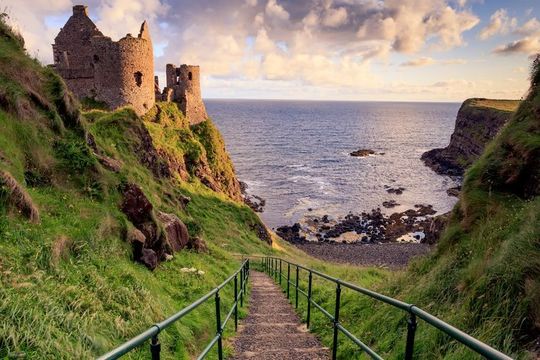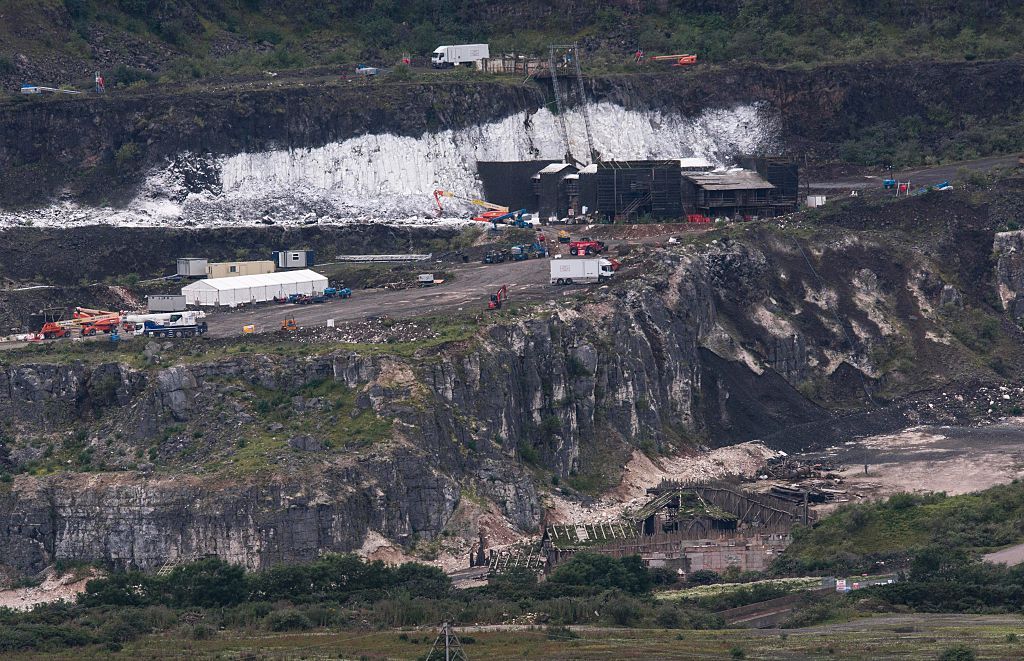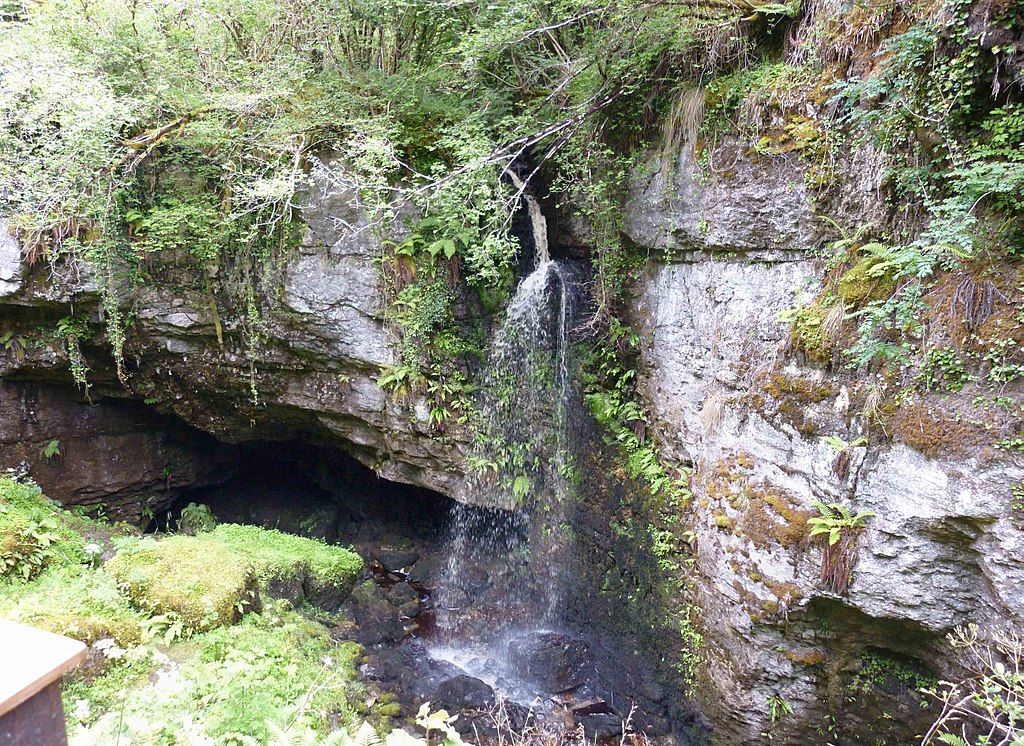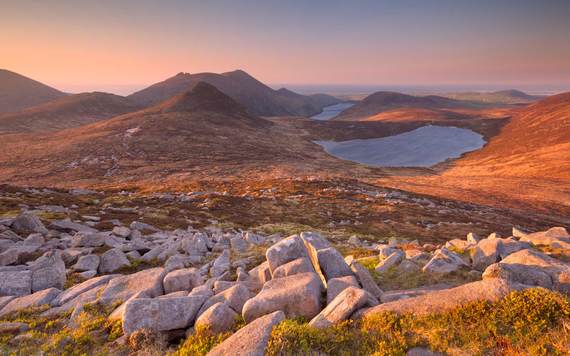
Dunluce Castle is just one of the many stunning Game of Thrones® filming locations in the UKMatthew Woodhouse
The final season of Game of Thrones® is here, but fans’ love of everything GOT will live on long after the May 19 series finale. These are the filming locations you must see in the UK.
One of the best ways to relive the magic of Game of Thrones® is through a travel odyssey to the now-iconic locations where the series was filmed. Fortunately, there are dozens Game of Thrones® filming locations easily accessible in Northern Ireland, the largest Game of Thrones® public exhibition ever is on display in Belfast now through September, and in 2020 one of the show’s main studio spaces in Northern Ireland will open to the public as an immersive GOT experience.
From the flaxen grasses of the Dothraki Sea to the shadowy clearings of the Haunted Forest where the White Walkers roam, you can find it all in Northern Ireland. This is the ultimate Game of Thrones® fan’s travel guide.
Book: A Game of Thrones® tour

Photo: HBO
Game of Thrones® would not be the same without the island of Ireland. Before the TV show was even a glimmer in the eye of HBO, the Emerald Isle had already made a massive impact on the George R. R. Martin series A Song of Ice and Fire.
Read: Game of Thrones Real Life UK Inspirations
Martin, who is a quarter Irish on his mother’s side of the family, based the geography of his fictional universe on that of Ireland and the United Kingdom. Look at a map of Westeros closely and you’ll realize that you’re looking at the island of Ireland turned upside down, with famous Westeros landmarks in place of major cities: King’s Landing as Galway, Donegal Bay as the Sea of Dorne, Belfast as Old Town, and Dublin as Casterly Rock.

Image: HBO
This makes it all the more fitting that when the time came to shoot the Game of Thrones® HBO series, Northern Ireland got the lion’s (and the wolf’s!) share of filming locations.
Some of the most pivotal scenes found their real-world settings in Northern Ireland, including Winterfell, the home of House Stark (Castle Ward and Demesne in Strangford. Co. Down for the first season and Toome, Co. Antrim for the later seasons); the King’s Road (the Dark Hedges in Ballymoney, Co. Antrim); and the Wall that separates the Seven Kingdoms from the realm of the Wildlings and the Night King (Magheramorne Quarry in Co. Antrim - with a healthy dose of CGI special visual effects). For the final season, the cast and crew filmed an epic battle sequence for 55 nights straight in the villages of Toome and Magheramore.

Image: HBO
And let’s not forget about the interior scenes! Titanic Studios in Belfast and Linen Mill Studios in Bainbridge, Co. Down are where the throne rooms of Westeros and Essos were constructed, crypts and septs were re-created, and battles at sea were pieced together with CGI.

Kings Landing's map room at Linen Mill Studios. Photo: HBO
While there are many Game of Thrones® tours you can take, you can also channel Arya Stark’s independent spirit and set out on your own journey. In addition to Game of Thrones® highlights, this route follows the breathtaking coastline, including the world-famous Causeway Coastal Route, so you can take in famous sites and vistas along the way before winding around back to Belfast for some fun.
Departing from Belfast International Airport and driving 30 minutes north and west, your first stop should be Toome, a village that sits on the northwest side of Lough Neagh, one of the largest freshwater lakes in Europe.

Toome bridge. Photo: Albert Bridge/CCL
This area has held many supporting roles in Game of Thrones®. Lough Neagh appeared as the Summer Sea, the body of water to the south of Essos and Westeros, and the Toome Canal filled in for the Old Valyrian Canal, where Jorah Mormont (Iain Glen) and Tryion Lannister (Peter Dinklage) are attacked by the stone men in season five.

Tyrion and Jorah. Photo: HBO
Since season two, most of the scenes involving Winterfell, the home of the Stark family, have been shot in Toome and the nearby village of Moneyglass, making them must-sees for diehard fans.

Winterfell set at Moneyglass. Photo: Charles McQuillian/Getty Images
A mere 15-minute drive to the east, on the northeast bank of Lough Neagh, sits the ruins of Shane’s Castle near Randalstown, Co. Antrim. The lands and castle ruins, which date back to the 1300s, were the scene of the dramatic Tourney of the Hand in season one and have represented both the dungeons of King’s Landing and the crypts of Winterfell.

Shane's Castle. Photo: Kenneth Allen/CCL
Next, head for Northern Ireland’s famously beautiful coast! Magheramorne Quarry near Larne. Co, Antrim, represents an ingenious piece of location scouting. The abandoned quarry was retrofitted to be the setting for multiple locations in the north of Westeros, including Castle Black where the Night's Watch are stationed, the Wildling village of Hardhome, and the massive wall that separates the realms of night from the kingdom of men.

Magheramorne Quarry, which doubles as Castle Black and The Wall. Photo: Charles McQuillan/Getty Images
While Magheramorne was a closed set during the filming of Game of Thrones®, plans are in store to open it as a tourist attraction at some point in the future.

Hills of Cairncastle. Photo: Albert Bridge/CCL
The rolling hills of Cairncastle, which sit on the other side of Larne, have portrayed a range of Westerosi locations. You can visit the stone where Ned Stark (Sean Bean) portentously beheaded a man in the very first episode of the series, and pace the grounds where Catelyn Stark (Michelle Fairley) captures Tyrion Lannister. Cairncastle was also the setting for The Neck at Moat Cailin, where Lord Baelish (Aiden Gillen) tells Sansa Stark (Sophie Turner) about his plans for her future with the Bolton family.

Sansa and Littlefinger. Photo: HBO
In the Game of Thrones® universe, it would take weeks to get from Moat Cailin to the Dothraki Grasslands, but luckily the Shillanavogy Valley is just a 20-minute drive to the west from Cairncastle. Shillanavogy Valley, which rests in the shadow of Slemish Mountain in Co. Antrim, is the setting for the Dothraki Grasslands where Mother of Dragons Daenerys Targaryen (Emilia Clarke) is most often seen in Season 1.

Shillanavogy Valley. Photo: Brian Morrison
Scoot on over to Carnlough, a charming town that sits on Carnlough Bay. The stone walls and docks of the harbor are where Maisie Williams filmed Arya’s scenes along the Bravos Canal in season six. The town is also renowned for its fish and chips, so tuck in!

Maisie Williams filming at Carnlough. Photo: Charles McQuillian/Getty Images
En-route out of town, stop at Glenariff in the Glens of Antrim, which was the ideal location to represent the lush Vale of Arryn.

Glenariff. Photo: Stefan Schnebelt
Veer back north towards the craggy coastline and brace yourself for a visit to the mysterious and beautiful Cushendun Caves. This is the spot where the Red Priestess Melisandre (Carice van Houten) births the shadow assassin to carry out Stannis Baratheon’s (Stephen Dillane) bidding.

Ser Davos and Melisandre in Cushendun Cave. Photo: HBO
A 25-minute drive up the coast will land you at Murlough Bay, known as Slaver’s Bay - and, later, the Bay of Dragons - in Essos in the Game of Thrones® universe. Murlough Bay is a highlight of the Causeway Coastal Route and boasts unparalleled views of Rathlin Island. On an especially clear day you can even see the Mull of Kintyre in Scotland.

Murlough Bay. Photo: Chris Hill
An imposing cliff at the northeast corner of Co. Antrim, Fair Head was the location for one of the most anticipated meetings in Game of Thrones® history - when Jon Snow (Kit Harrington) meets Daenerys’ dragon/child Drogon for the first time in season seven. A popular rock-climbing spot, Fair Head also makes a lovely hike for those less vertically inclined.

Drogon and Jon Snow meet. Photo: HBO
Another 30 minutes or so along the Causeway Coastal Route will take you to Ballintoy Harbor, which has been used as the location for Pyke, the seat of power of the Iron Islands, the kingdom of the Ironborn that splintered from Westeros.

Pyke. Photo: HBO
Many pivotal scenes between the Greyjoy family have been filmed here, and Dunluce Castle - adorned with digital effects - has stood in for Castle Greyjoy.

Dunluce Castle. Photo: Chris Hill
Take some time to explore the beautiful town of Ballintoy and make sure you fit in an excursion to the world-famous Carrick-a-Rede Rope Bridge, just 10 minutes away.

Ballintoy Harbor. Photo: Tourism Ireland
From there, swoop back inland and down to one of the most iconic Game of Thrones® locations, the mysterious Dark Hedges of Gracehill House in Ballymoney, Co. Antrim. They have been used as a location for The King’s Road, which is the longest road in the Seven Kingdoms, running from the Wall at Castle Black all the way to King’s Landing.

The Dark Hedges. Photo: Chris Ward
Less than 20 miles from the Dark Hedges, you’ll find the sandy beaches of Portstewart in Co. Derry-Londonderry, the filming location for the Dornish coast. Dorne is the southernmost kingdom of Westeros, home to the House of Martell and the Sandsnakes. It’s where Jaime Lannister (Nikolaj Coster-Waldau) and Bronn of the Blackwater (Jerome Flynn) set foot on land during their mission to rescue Princess Myrcella Baratheon (Nell Tiger Free).

The coast of Dorne (Portstewart Strand). Photo: HBO
Downhill Strand in Co. Derry-Londonderry is the setting for Dragonstone, the ancestral castle and island of the Targaryen family in Blackwater Bay. It’s where Stannis Baratheon and his troops set up camp in the early seasons, and where Daenerys and her army first set foot on her ancestral homeland.

Downhill Strand and Mussenden Temple. Photo: Chris Hill
Be sure to explore the stunning Mussenden Temple, too, a National Trust Historic Site modeled after the Temple of Vesta in Ancient Rome.

Danerys at Dragonstone. Photo: HBO
Binevenagh Mountain, also in Co. Derry-Londonderry, boasts a mountain walk, a scenic route, and gorgeous views of Lough Foyle. Like the the Shillanavogy Valley, it is a location for the Dothraki Sea in Essos.

Binevenagh Mountains. Photo: Matthew Woodehouse
It’s a bit of a detour, but if you have the time, head south and east to Pollnagollum Cave in Belmore Forest in Co. Fermanagh, part of the Marble Arch Caves Geopark – worth a visit in its own right. Fans will recognize this cave as the hideaway of the Brotherhood Without Banners in season three.

Pollnagollum Cave and Waterfall in Marble Arch Geopark. Photo: Wikimedia Commons
Or, if you’re not willing to head that far west, you can begin to close the loop of this Game of Thrones® route by driving south and east from Binevenagh to Gosford Castle in Markethill, Co, Armagh, which was the setting for the Tully family’s ancestral home of Riverrun. Thinking about extending your stay in Northern Ireland for a long time? Gosford Castle was recently put on the market as a private residence.

Gosford Castle. Photo: Robert Ashby/CCL
Next, you’re in for a treat. Drive 30 minutes east to Bainbridge, Co. Down, where, starting in 2020, you’ll be able to take an official Game of Thrones® studio tour. Located at the Linen Mill Studios, one of the series’ primary studio locations, the Game of Thrones® Studio Tour is a must for all fans.

Game of Thrones Studio Tour rendering. Image: HBO
Showcasing authentic sets, costumes and props from all seasons of the hit series, the tour will allow fans to truly step inside the world of Westeros and beyond. It will evoke the show’s magnificence from King’s Landing, Winterfell, Dragonstone, The Wall and the lands beyond, to kingdoms across the Narrow Sea like Mereen and Braavos. The new 110,000-square-foot interactive experience and will open its gates for visitors in Spring 2020. It is the first in a series of Game of Thrones® legacy projects announced by HBO, so stay tuned for more.

Sunrise over the Mountains of Mourne. Photo: Getty Images
Dip down to the Mourne Mountains next. This granite mountain range in Co. Down has performed double duty as the setting for Vaes Dothrak, in addition to the woods north of Winterfell where Bran Stark (Isaac Hempstead-Wright) meets Meera and Jojen Reed (Ellie Kendrick and Thomas Brodie-Sangster).

Tollymore Forest Park. Photo: Chris Hill
On the topic of the woods outside of Winterfell, nearby Tollymore Forest Park has also served as a filming location for the woods surrounding Winterfell but might be even more recognizable as the Haunted Forest beyond The Wall, where the Wildlings and the White Walkers roam.

In the woods of Winterfell. Photo: HBO
Six hundred acres of ancient redwood trees and crumbling gothic ruins await you. Tollymore is one of the most beautiful forests in all of Northern Ireland, and only 33 miles south of Belfast.

Inch Abbey. Photo: Brian Morrison
As you begin your journey back north to Belfast, stop at Inch Abbey, an ancient monastic site in Co. Down. The historic ruins, which date back to 1180, are the spot where Catelyn and Robb learn of Ned Stark’s death, and where Robb Stark (Richard Madden) becomes King in the North. While there, check out the town of Downpatrick too, believed to be the burial place of St. Patrick himself.

Photo: HBO
In season one of Game of Thrones®, Castle Ward and Demesne near Strangford in Co. Down served as the setting for Winterfell.

Winterfell in Game of Thrones. Photo: HBO
The 18th-century property – a National Trust site – has fully embraced its modern claim to fame, offering visitors the chance to live a full 'Game of Thrones®' experience, dressing up in character and practicing archery in the very spot where Robb, Bran Stark and Jon Snow do in the series.

Game of Thrones tour and activities at Castle Ward in Northern Ireland. Photo: Patrick McQuillian
Finally, it’s time to head to Belfast City, to the Titanic Quarter where many of Game of Thrones®’ interior scenes and special effects have been filmed over the last 10 years. Game of Thrones: The Touring Exhibition is open at TEC Belfast from now through August 31. There you will be able to explore the Seven Kingdoms in an immersive set experience, including the regal settings of King’s Landing, the conquered city of Meereen with its garrisons of Unsullied warriors, and the frozen lands Beyond the Wall.

Game of Thrones Touring Exhibition
After getting your fill of Game of Thrones®, head to the nearby Irish pub Kelly’s Cellars, where cast members Kit Harington, Emilia Clarke, Jacob Anderson, and Peter Dinklage delighted regulars with a visit in March 2018. The series may be over, but the memories will live on!
As you may have noticed, Winter Is Coming. Or Coming Back. Or whatever.
— Kelly's Cellars (@kellyscellars) March 4, 2018
But whatever it is, it was a pleasure to welcome some of the cast of Game of Thrones yesterday evening.
Because that's what they do.
They drink. And they know things. pic.twitter.com/UyhlYHb9NY
Taken from IrishCentral





Comments